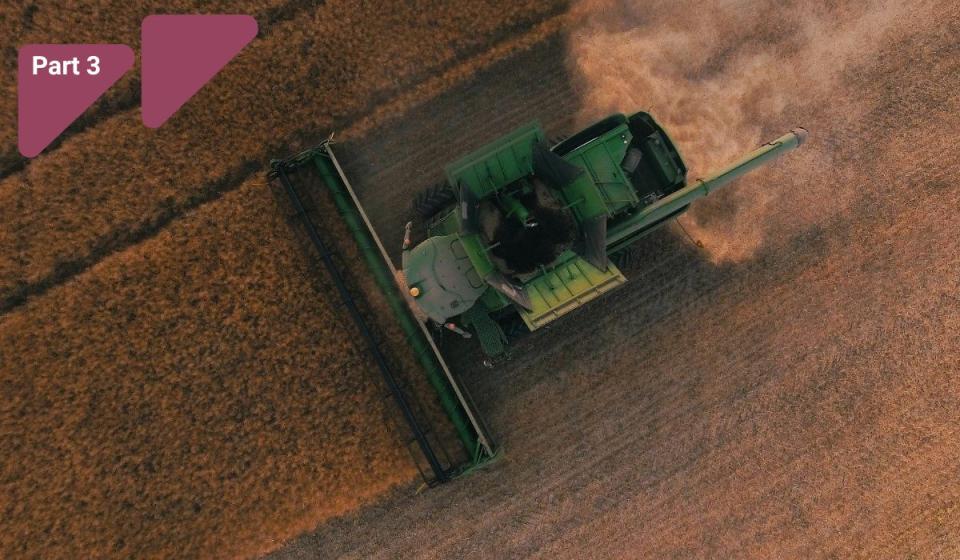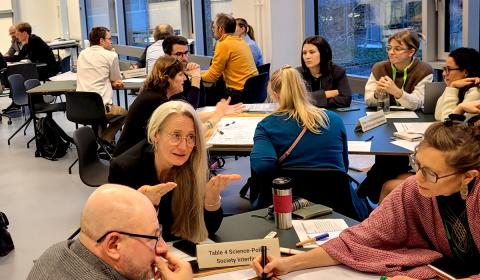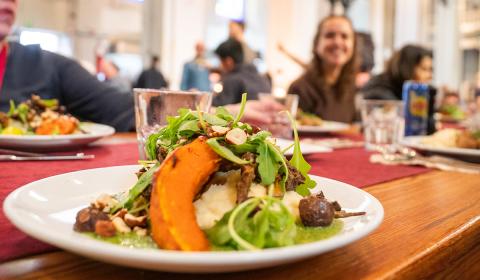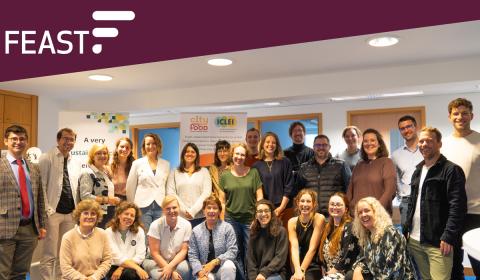
Image source: Tomas Hertogh on Unsplash
Welcome to the third blog post of our series about the relationship between our food and climate. In the intricate tapestry of global agriculture, discerning the fine line between cultivating food for human consumption and feed for animals poses a complex challenge with meaningful implications for sustainability, food security, and environmental health.
The Complex Dynamics of Global Agriculture
The shift from conventional to sustainable practices is crucial, given the complex factors governing our food and feed systems. Embracing sustainability demands careful exploration of pathways, and it's evident that, with a changing climate and growing population, we lack infinite choices. The decisions we make now echo for generations, emphasizing the urgency to find solutions for feeding the global population without compromising our planet's health.
As the global population grows, the demand for both food and animal feed rises. However, the challenge lies in achieving a delicate equilibrium, as the resources needed for cultivating crops for human consumption often overlap with those essential for animal feed production. This balance is crucial, given that favoring one over the other can have far-reaching repercussions throughout the entire food system1.
The intensive land use raises concerns about deforestation, biodiversity loss, and soil degradation1. Furthermore, the livestock industry, a major consumer of feed crops, is responsible for nearly 14.5% of global greenhouse gas emissions, predominantly methane from enteric fermentation and nitrous oxide from manure. The environmental impact extends beyond land use, with water-intensive irrigation and the use of synthetic fertilizers contributing to pollution and resource depletion2.
Yet, amid these challenges, solutions emerge. Circular agriculture, emphasizing a closed-loop system where by-products from one process become inputs for another, offers a promising approach. Approximately one-third of all food produced globally is lost or wasted, amounting to around 1.3 billion tons annually. Repurposing this food waste and by-products as animal feed not only reduces waste but aligns with a more sustainable model. Challenges may arise in the efficient processing of food waste on a large scale, and potential contaminants must be addressed for widespread success3.
Innovative Solutions and Sustainable Practices
Innovations in feed production, such as exploring alternative protein sources like insect-based or plant-based proteins, provide a route to diversify the feed industry and reduce its environmental impact, but it may face resistance from traditional stakeholders and consumer acceptance, as well as the possibility of higher production costs. Also, the ecological impact of large-scale cultivation of alternative protein sources needs more research4,5,6.
Policy, Education, and Economic Considerations
On the policy front, a holistic approach is essential. Subsidies, incentives, and regulations can steer the industry towards more sustainable practices in food and feed production. On the other side, these policies might encounter opposition from well-established interests within the agricultural sector, and can lead to different outcomes regarding the local conditions. Furthermore, educating consumers about the impact of their food choices is a crucial step towards more sustainable food system. It is important to take into account that behavioral change among consumers may take time, and there could be resistance to altering dietary preferences. The effectiveness of education campaigns relies on diverse factors, including cultural influences and accessibility to alternative food choices7.
Therefore, the transition from traditional to sustainable practices involves the examination of feasibility and potential trade-offs. The inertia inherent in established systems is often rooted in economic factors driven by market forces, pricing structures, and consumer demand. Feasibility is closely tied to economic viability, necessitating collaborative efforts between governments and industries to provide incentives, subsidies, and transparent pricing structures for sustainable alternatives. Consumer demand, a key factor, requires education and awareness efforts to reshape preferences, but it is time consuming. Economic drivers influence the yield, efficiency, and the need for supply chain adjustments. Global equity is another challenge, particularly for small-scale farmers and developing economies7,8.
Shifts in agricultural focus also influence the nutritional quality of both human food and animal feed8. Diversifying crops enhances nutrient availability in human diets and contributes to high-quality livestock products. The adoption of sustainable and regenerative farming practices improves soil health and positively impacts nutrient density in crops for both food and feed. However, challenges such as implementation hurdles and transition costs may hinder the widespread adoption of these practices.8 The biodiversity impact of agricultural choices is crucial, yet, market demands for specific crops may incentivize monoculture, challenging biodiversity goals1,5. Navigating market dynamics is crucial to ensure economic viability and consumer acceptance. However, short-term market pressures may prioritize profit over long-term sustainability and nutritional considerations9.
Conclusion: Strategic Planning for a Sustainable Future
In conclusion, strategic planning, policy support, and stakeholder collaboration are vital to manage the complexities of this interplay and to ensure a sustainable, nourishing food supply. The changes we make today will shape the landscape of tomorrow, determining not only what's on our plates but also the health of our planet.
References
1 Çakmakçı, Ramazan, Mehmet Ali Salık, and Songül Çakmakçı (2023). "Assessment and Principles of Environmentally Sustainable Food and Agriculture Systems" Agriculture 13, no. 5: 1073. https://doi.org/10.3390/agriculture13051073
2 DSM, official website (n.d.) Reducing Emissions from Livestock
3 Chiaraluce, G., Bentivoglio, D. & and Finco, A. (2021). Circular Economy for a Sustainable Agri-Food Supply Chain: A Review for Current Trends and Future Pathways. Sustainability 13, no. 16: 9294. https://doi.org/10.3390/su13169294
4 Georgios, P., Doherty, B. & Kyriazakis, I. (2023). The future of protein sources in livestock feeds: implications for sustainability and food safety. Frontiers in Sustainable Food Systems, https://www.frontiersin.org/articles/10.3389/fsufs.2023.1188467
5 Lee HJ, Yong HI, Kim M, Choi YS, Jo C. (2020). Status of meat alternatives and their potential role in the future meat market - A review. Asian-Australas J Anim Sci.;33(10):1533-1543. doi: 10.5713/ajas.20.0419.
6 Stéphane Manceron, S., Ben-Ari, T. & Dumas, P. (2014). Feeding proteins to livestock: Global land use and food vs. feed competition, https://hal.science/hal-01173309/
7 FAO (2023). Considerations when choosing policies.
8 FAO. 2017. The future of food and agriculture – Trends and challenges. Rome, https://www.fao.org/3/i6583e/i6583e.pdf
9 Wastebits, official webpage (2023). Short-termism Vs. Sustainability: The Critical Role of ESG Goals in Long-Term Corporate Growth, ESG, Sustainability.


